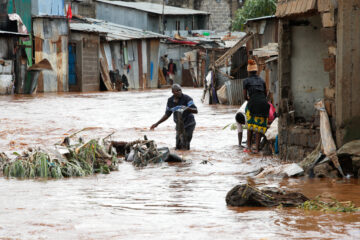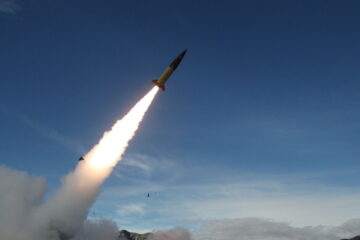Solar plane heads across Pacific on historic journey
The revolutionary Solar Impulse 2 aircraft took off early Sunday for a six-day, six-night flight over the Pacific Ocean, the most ambitious leg of its quest to circumnavigate the globe powered only by the sun.
Pilot Andre Borschberg, 62, left the ground in Nanjing, in eastern China, heading for the US island of Hawaii, at about 2:40 am (1840 GMT), after extended delays awaiting a suitable weather window over safety concerns.
Lit by white lights on its wings, the plane rolled down the runway before climbing into a misty sky with its four whirling propellers nearly silent.
Ground crew members cheered as it took off.
The 8,500 kilometre (5,270 mile) flight could set a record for duration by a single pilot, organisers said.
"I cross my fingers and I hope to cross the Pacific," Borschberg told reporters just hours before the take-off.
"We have a good weather window, which means we have a stable corridor to reach Hawaii," he said, shortly before climbing into the cockpit to test the instruments.
The current flight plan saw no threat from typhoons, a typical weather threat in Asia.
"I\’m really confident we should be able to get through and find the right way," he said.
It is the seventh and longest section of the maiden solar-powered global circumnavigation, an attempt to promote green energy.
The journey began in Abu Dhabi in March and is scheduled for 12 legs, with a total flight time of around 25 days.
Nonetheless Solar Impulse 2 spent two months in China after arriving at Chongqing airport from Myanmar on March 31, where it had been due to make only a brief stop before continuing to Nanjing but was held up for weeks by weather issues.
Each day on the Pacific voyage, Borschberg will experience altitudes of 28,000 feet, akin to the world\’s highest peak, and temperature changes of 55 degrees Celsius (almost 100 Fahrenheit) in the unpressurised, unheated Solar Impulse 2 cockpit.
At the same time he will only be able to catch the shortest of naps — his seat doubles as a bed — given the need to check the autopilot.
But failure could mean a parachute descent into the ocean hundreds of kilometres from rescue.
No ship will trail the plane as it is far too fast for a maritime vessel to keep up with, even though its maximum speed of 140 kilometres (87 miles) an hour is much slower than conventional jet aircraft.
Even so, with an engineer\’s detachment, Borschberg has declined to contemplate his own mortality.
"I don\’t see it (as) risky, in the sense that we worked a long time on all these different questions," he previously told AFP.
"In the worst case, we have a parachute, we have a life raft and we know how to use it. Of course, hoping that we will not need to do that."
Planners had identified airports in Japan should the plane need to make a stop because of technical problems, but the open ocean offered no such possibility, he said.
"As soon as we leave this part of the world, then afterwards we are in the open sea. There is no way to come back," Borschberg said.
Solar Impulse 2 is powered by more than 17,000 solar cells built into wings that, at 72 metres, are longer than those of a Boeing 747 and approaching those of an Airbus A380 superjumbo.
In advance of the Pacific flight, the crew stripped off two side wheels and internal brakes from the propellers to make the fragile-looking craft — already just 2.3 tonnes, the weight of a large SUV — as light as possible.
At one point Borschberg returned to his native Switzerland for medical checks related to migraine problems.
The plane is the successor of Solar Impulse, which notched up a 26-hour flight in 2010, proving its ability to store enough power in lithium batteries during the day to keep flying at night.
Ridiculed by the aviation industry when it was first unveiled, the Solar Impulse venture has since been hailed around the world, including by UN chief Ban Ki-moon.
"Now is the moment just to demonstrate what this airplane can do — fly day and night with no fuel," Bertrand Piccard, who has flown the Solar Impulse on other stages of the voyage, told reporters by video link.
SOURCE: AFP
[do_widget_area inner_adsbar]










